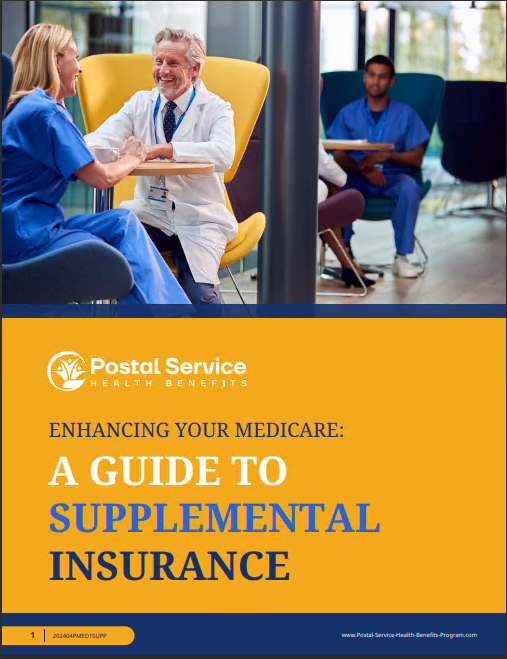Key Takeaways:
- USPS retirees must enroll in Medicare Part B to maintain full health coverage under the new Postal Service Health Benefits (PSHB) program by 2025.
- Failing to act before 2025 may result in losing key healthcare benefits, making timely decision-making critical for all USPS retirees.
The Medicare Mandate: USPS Retirees Must Make This Critical Choice Before 2025
The landscape of healthcare coverage for United States Postal Service (USPS) retirees is changing, and the clock is ticking. By 2025, all USPS retirees will need to make a crucial decision: whether or not to enroll in Medicare Part B. This mandate is tied to the introduction of the Postal Service Health Benefits (PSHB) program, which will replace the current Federal Employees Health Benefits (FEHB) program for postal workers and retirees. While the new system promises smoother integration with Medicare, retirees must act to ensure they maintain comprehensive health coverage. The consequences of inaction could be costly, so it’s vital to understand the options and implications now.
What is the Postal Service Health Benefits (PSHB) Program?
The Postal Service Health Benefits (PSHB) program is set to take effect in 2025 and will mark a significant shift in healthcare coverage for USPS employees and retirees. This new program will be tailored specifically for postal workers, separating their benefits from the Federal Employees Health Benefits (FEHB) program, which currently serves all federal employees.
The PSHB is designed to better integrate with Medicare, particularly Medicare Part B, which covers outpatient care, doctors’ services, and preventive healthcare. By enrolling in Medicare Part B, USPS retirees will be able to receive full benefits under the PSHB. Without this enrollment, retirees could face gaps in coverage or potentially higher costs for their healthcare services.
Why is the PSHB Program Being Implemented?
The PSHB program is part of a broader effort to reduce costs and improve healthcare outcomes for postal retirees. For years, the rising costs of healthcare have placed significant financial strain on the USPS and the federal government. By creating a health benefits program specifically for postal workers that coordinates more effectively with Medicare, the government aims to provide USPS retirees with more streamlined care while alleviating some of the financial burdens.
However, while the PSHB offers potential benefits, it also places new responsibilities on retirees. The most pressing of these is the requirement to enroll in Medicare Part B.
Understanding the Medicare Part B Enrollment Requirement
Beginning in 2025, all USPS retirees must enroll in Medicare Part B if they want to retain full coverage under the new PSHB program. Medicare Part B covers essential services like physician visits, outpatient procedures, and preventive care, which are critical to maintaining comprehensive health coverage.
Many retirees are already enrolled in Medicare, but for those who haven’t yet made this decision, the clock is ticking. Retirees who fail to sign up for Medicare Part B by the 2025 deadline risk losing significant health benefits. This can lead to higher out-of-pocket costs or the need to seek alternative health coverage.
What Happens if You Don’t Enroll in Medicare Part B?
If a USPS retiree chooses not to enroll in Medicare Part B, they will still be covered by the PSHB program, but the coverage will be significantly reduced. Without Medicare Part B, retirees could face higher premiums, out-of-pocket costs, and limited access to certain healthcare services. In some cases, they may have to pay for services that would otherwise be covered under Medicare.
Moreover, retirees who miss the 2025 deadline may be subject to late enrollment penalties. Medicare imposes a penalty for every 12-month period you go without Part B coverage once you are eligible. This penalty adds a permanent increase to your Part B premiums, making healthcare even more expensive in the long run.
Preparing for the 2025 Deadline
The 2025 deadline may seem far away, but USPS retirees need to start planning now. Enrollment in Medicare Part B involves specific steps and timelines, and missing critical deadlines can have long-term financial consequences. Here’s a guide to help you prepare:
1. Assess Your Current Health Coverage
If you’re a USPS retiree who is currently enrolled in the FEHB program, now is the time to evaluate your current coverage. Compare your current benefits to what will be available under the PSHB program and determine if enrolling in Medicare Part B makes sense for your situation.
2. Understand the Medicare Enrollment Process
Medicare enrollment can be confusing, especially for those navigating the system for the first time. USPS retirees who are turning 65 or who have delayed enrolling in Medicare because of continued employment will need to understand the Medicare enrollment periods.
- Initial Enrollment Period (IEP): You can sign up for Medicare during a seven-month window around your 65th birthday (three months before your birthday, your birth month, and three months after your birthday).
- General Enrollment Period (GEP): If you miss your IEP, you can sign up for Medicare during the GEP, which runs from January 1 to March 31 each year. However, late penalties may apply.
- Special Enrollment Period (SEP): USPS retirees who delayed Medicare enrollment because they were still working can enroll without penalties during an SEP, which lasts up to eight months after you retire.
3. Calculate the Costs of Medicare Part B
Although Medicare Part B provides significant benefits, it comes with a monthly premium. For many retirees, this is a small price to pay for comprehensive healthcare coverage, but it’s important to factor this cost into your retirement budget. Keep in mind that late enrollment penalties could increase the cost of Medicare Part B significantly if you wait past the 2025 deadline.
4. Seek Guidance from Licensed Insurance Agents
USPS retirees who are unsure about how to navigate the transition to Medicare or the PSHB program should consider speaking with a licensed insurance agent. These professionals can offer personalized advice and help retirees understand their coverage options under Medicare and the PSHB. While the final decision rests with the retiree, having expert guidance can make the process smoother.
How Does the PSHB Program Benefit USPS Retirees?
The PSHB program is designed to offer retirees a more integrated healthcare experience, especially when paired with Medicare. Some of the key benefits include:
- Streamlined Care: By aligning with Medicare, the PSHB program ensures that retirees have access to a wider network of healthcare providers.
- Lower Out-of-Pocket Costs: Enrolling in Medicare Part B can reduce out-of-pocket costs for services like doctor’s visits and outpatient care, which are only partially covered by the PSHB alone.
- Comprehensive Coverage: Combining Medicare Part B with the PSHB ensures that retirees have both hospital and medical insurance, providing a more complete safety net for healthcare needs in retirement.
However, retirees must be proactive in securing these benefits by enrolling in Medicare Part B before the deadline.
Important Considerations for USPS Retirees
Transitioning to the new PSHB program may require USPS retirees to make difficult decisions about their healthcare coverage. It’s essential to weigh the costs and benefits carefully. Some important factors to consider include:
- Health Status: If you have ongoing health issues or anticipate needing frequent medical care in retirement, enrolling in Medicare Part B could save you money in the long run.
- Income and Premiums: While Medicare Part B premiums are manageable for most retirees, those on a fixed income need to account for this additional expense.
- Long-Term Healthcare Needs: Medicare Part B offers more comprehensive coverage for outpatient services and preventive care, which can be crucial as retirees age.
Steps to Take Now
USPS retirees should act now to ensure a smooth transition to the PSHB program by 2025. Start by reviewing your current healthcare coverage, understanding Medicare Part B enrollment periods, and calculating any potential costs associated with the change. Additionally, reaching out to a licensed insurance agent can help clarify any lingering questions about your coverage options.
Protect Your Future Healthcare
The Medicare mandate for USPS retirees represents a critical turning point in retirement planning. As 2025 approaches, retirees must make informed choices about their healthcare coverage to protect their health and financial well-being. Failing to act could lead to higher costs and reduced coverage, so it’s essential to enroll in Medicare Part B before the deadline.






